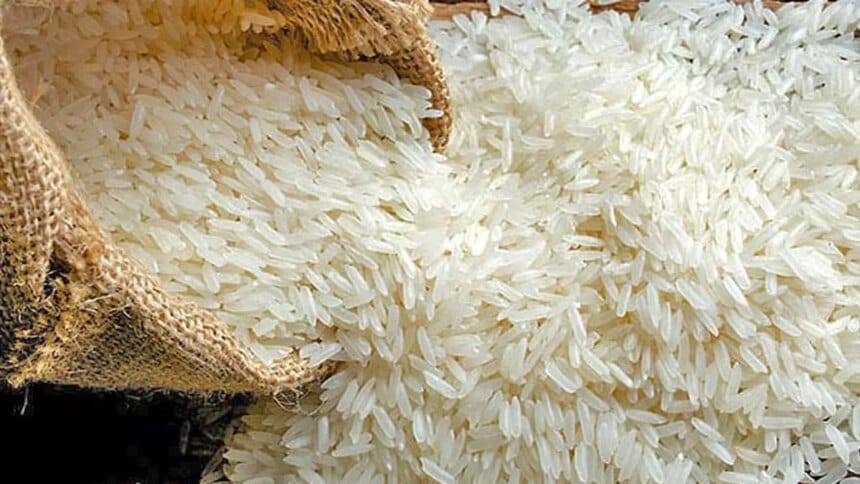Main Points In Hindi (मुख्य बातें – हिंदी में)
-
चावल निर्यात प्रतिबंधों में ढील: खाद्य और कृषि संगठन (एफएओ) के अनुसार, भारत द्वारा चावल निर्यात पर प्रतिबंधों में ढील देने के बाद एशिया में साबुत अनाज इंडिका चावल की कीमतें 10 से 72 डॉलर प्रति टन तक गिर गईं।
-
न्यूनतम निर्यात मूल्य (MEP) में बदलाव: भारत सरकार ने सफेद चावल के निर्यात के लिए $490/टन का न्यूनतम निर्यात मूल्य तय किया और अन्य प्रकार के चावल पर निर्यात शुल्क को 20% से घटाकर 10% कर दिया, जिससे बाजार में बंपर फसल की आवक हुई।
-
बासमती चावल की कीमतों में गिरावट: सुगंधित चावल, विशेषकर बासमती की कीमतें 35 महीने के निचले स्तर पर आ गईं, जिसके पीछे भारत की निर्यात नीतियों का बड़ा हाथ है।
-
थाई और वियतनाम की कीमतों में कमी: भारत की निर्यात नीति में बदलाव के चलते थाईलैंड और वियतनाम में चावल की कीमतों में भी लगभग 10% की गिरावट आई है।
- वैश्विक घटनाओं का प्रभाव: चावल की कीमतों पर प्रभाव डालने वाले अन्य कारकों में अमेरिका से चावल की कीमतों में वृद्धि और वियतनाम, थाईलैंड और म्यांमार में आए टाइफून का असर शामिल है।
Main Points In English(मुख्य बातें – अंग्रेज़ी में)
Here are the main points of the article regarding the easing of rice export restrictions by India and its impact on prices:
-
Price Decline of Indian Rice: Following India’s decision to ease export restrictions on rice, the prices of whole grain Indica rice in Asia have dropped significantly, ranging from $10 to $72 per ton compared to September averages.
-
Government Actions: The Indian government allowed exports of white rice on September 27-28 while setting a minimum export price (MEP) at $490 per ton. Additionally, export duties on boiled, brown, and husked rice were reduced from 20% to 10%.
-
Impact on Basmati Rice Prices: With the government removing MEP for aromatic rice, especially Basmati, prices have fallen to a 35-month low, in conjunction with a surplus harvest entering the market.
-
Regional Price Comparisons: Data from Thailand shows a nearly 10% drop in rice prices following India’s easing of restrictions, with significant reductions in the prices of various grades of Thai rice.
- Market Dynamics: Analysts suggest that the simplification of prices and increased orders for Indian rice are influenced by the quality of Indian rice, and they note the potential market impacts due to weather events in neighboring rice-producing countries like Vietnam, Thailand, and Myanmar.


Complete News In Hindi(पूरी खबर – हिंदी में)
संयुक्त राष्ट्र की एक शाखा, खाद्य और कृषि संगठन (एफएओ) ने कहा है कि भारत द्वारा चावल निर्यात पर प्रतिबंधों में ढील दिए जाने के बाद एशिया में साबुत अनाज इंडिका चावल की कीमतें सितंबर के औसत से 10 डॉलर से 72 डॉलर प्रति टन के बीच गिर गईं।
सरकार ने 27-28 सितंबर को सफेद चावल के निर्यात की अनुमति दी लेकिन $490/टन एमईपी तय की। इसने उबले, भूरे और छिलके वाले चावल पर निर्यात शुल्क को 20 प्रतिशत से घटाकर 10 प्रतिशत कर दिया।
इसके अलावा, बाजार में बंपर फसल की आवक और भारत सरकार द्वारा सुगंधित चावल के शिपमेंट के लिए 950 डॉलर प्रति टन न्यूनतम निर्यात मूल्य (एमईपी) को हटाने के बाद भारतीय बासमती की कीमतें 35 महीने के निचले स्तर पर आ गई हैं।
थाई कीमतें डेटा
थाईलैंड राइस एक्सपोर्टर्स एसोसिएशन के आंकड़ों से पता चलता है कि भारत द्वारा खाद्यान्न पर निर्यात प्रतिबंधों में ढील देने के बाद से चावल की कीमतों में लगभग 10 प्रतिशत की गिरावट आई है। जबकि 100 प्रतिशत ग्रेड बी सफेद चावल की कीमत 586 डॉलर से गिरकर 524 डॉलर प्रति टन हो गई है, 5 प्रतिशत सफेद चावल गिरकर 509 डॉलर ($570 से), 25 प्रतिशत सफेद चावल $497 ($550) और सफेद टूटा हुआ चावल ए1 सुपर $456 प्रति टन हो गया है। $486).
वियतनाम का 5 प्रतिशत टूटा हुआ भाव $524, 25 प्रतिशत टूटा हुआ $512 और 100 प्रतिशत टूटा हुआ $442 बताया गया। कृषि स्तर पर, वियतनाम में कीमतों में मामूली गिरावट आई है।
एक व्यापार विश्लेषक ने कहा कि भारतीय उबला हुआ चावल कांडला से ₹34,000 प्रति टन एफओबी ($409) पर उपलब्ध था। प्रतिस्पर्धी कीमतों का कारण सार्वजनिक वितरण प्रणाली के लिए चावल की कथित हेराफेरी और किसानों को न्यूनतम समर्थन मूल्य (एमएसपी) से नीचे बेचने के लिए मजबूर होना है।
बाढ़ के आदेश
“हमारे पास लगभग सभी जगहों से ऑर्डरों की बाढ़ आ गई है। दिल्ली स्थित निर्यातक राजेश जैन पहाड़िया ने कहा, हमारे खरीदार मुख्य रूप से भारतीय चावल की गुणवत्ता को देखते हुए वापस आ गए हैं।
दिल्ली स्थित व्यापार विश्लेषक एस चंद्रशेखरन ने कहा कि पिछले साल भारतीय और थाईलैंड चावल के बीच प्रीमियम में कमी आई है। उन्होंने कहा, “हमें यह देखना होगा कि वर्तमान में प्रीमियम के 25-30 डॉलर के स्तर तक नीचे आने पर बाजार किस तरह प्रतिक्रिया करता है।”
वर्तमान में, भारत से उबले चावल की कीमत 498-502 डॉलर प्रति टन है। थाईलैंड $521 पर और पाकिस्तान $549-553 पर ऑफर करता है।
अन्य कारक
दूसरी ओर, सफेद चावल के मामले में स्थिति पर नजर रखनी होगी। “क्या सफेद चावल पर भारत के एमईपी का प्रभाव पड़ेगा, हमें इंतजार करना होगा और देखना होगा। लेकिन एक दिलचस्प विकास यह है कि पिछले 5 वर्षों में अमेरिका से चावल की कीमतों में 200 डॉलर की वृद्धि हुई है, ”चंद्रशेखरन ने कहा।
दूसरा कारक जो वैश्विक चावल की कीमतों को प्रभावित कर सकता है वह वियतनाम, थाईलैंड और म्यांमार में टाइफून यागी का प्रभाव है, जहां जीवन और संपत्ति को भारी नुकसान हुआ है।
इस बीच, एफएओ ऑल राइस प्राइस इंडेक्स (एफएआरपीआई) सितंबर 2024 में औसतन 133.1 अंक रहा, जो अगस्त से 0.7 प्रतिशत कम और एक साल पहले के स्तर से 6.1 प्रतिशत कम है। इसका मुख्य कारण सुगंधित कीमतों, खासकर बासमती की कीमतों में गिरावट है।
एफएओ ने कहा कि ब्राजील उबले हुए चावल के लिए अच्छी कीमतों की पेशकश कर रहा है, जिससे भारतीय उबले हुए चावल और थाई ए1 सुपर चावल की कीमतों में वृद्धि में मदद मिल रही है।
चन्द्रशेखरन ने कहा कि मौजूदा मध्य-पूर्व तनाव का असर चावल की कीमतों पर भी पड़ सकता है क्योंकि मुद्राओं में उतार-चढ़ाव हो सकता है, खासकर दक्षिण-पूर्व एशिया में। उन्होंने कहा, “भारतीय रुपया अधिक स्थिर हो सकता है।”
Complete News In English(पूरी खबर – अंग्रेज़ी में)
The Food and Agriculture Organization (FAO), a branch of the United Nations, reported that prices for Indica rice in Asia have dropped between $10 to $72 per ton since India eased its rice export restrictions.
The Indian government allowed the export of white rice on September 27-28 but set a minimum export price (MEP) at $490 per ton. They also reduced the export tax on boiled, brown, and unprocessed rice from 20% to 10%.
Additionally, the prices of Indian basmati rice have fallen to a 35-month low after a bumper harvest and the removal of the $950 per ton minimum export price for aromatic rice.


### Thai Prices Data
Data from the Thailand Rice Exporters Association indicates that since India’s export restrictions were loosened, rice prices have decreased by about 10%. The price of 100% Grade B white rice fell from $586 to $524 per ton, while the cost of 5% white rice dropped from $570 to $509 and 25% white rice fell from $550 to $497. The price of broken A1 super white rice is now $456, down from $486.
Vietnam’s prices for broken rice are reported at $524 for 5%, $512 for 25%, and $442 for 100%. There has been a slight decrease in agricultural prices in Vietnam.
A trade analyst mentioned that Indian boiled rice is available from Kandla at ₹34,000 per ton (approximately $409). This competitive pricing is due to alleged diversion of rice meant for the public distribution system and farmers being forced to sell below the minimum support price (MSP).
### Flood of Orders
“We have received a surge of orders from various places,” said Rajesh Jain Pahadiya, an exporter based in Delhi, noting that buyers are returning primarily because of the quality of Indian rice.
Delhi-based trade analyst S. Chandrasekharan mentioned that the premium between Indian and Thai rice has decreased in the past year. He added, “We need to see how the market reacts now that the premium has fallen to levels of $25-30.”
Currently, prices for boiled rice from India range between $498-$502 per ton, while Thai rice is being offered at $521 and Pakistani rice at $549-$553.
### Other Factors
The situation for white rice needs to be monitored closely. “We will have to wait and see if India’s MEP will affect white rice prices. Interestingly, U.S. rice prices have increased by $200 over the past five years,” Chandrasekharan stated.
Another factor that could impact global rice prices is the effects of Typhoon Yagi in Vietnam, Thailand, and Myanmar, which has caused significant loss of life and property.
Meanwhile, the FAO All Rice Price Index (FARPI) averaged 133.1 points in September 2024, down 0.7% from August and 6.1% lower than the previous year, mainly due to a decrease in aromatic rice prices, especially basmati.
The FAO noted that Brazil is offering good prices for boiled rice, which could help raise prices for Indian boiled rice and Thai A1 super rice.
Chandrasekharan mentioned that ongoing tensions in the Middle East might also affect rice prices due to currency fluctuations, especially in Southeast Asia, suggesting that the Indian rupee could remain more stable.
Source link




